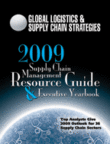
Visit Our Sponsors |
|
|
|
|
|
|
|
|
|
|
|
|
|
|
|
|
|
|
|
|
|
|
|
|
|
|
|
|
|
|
|
|
|
|
|
|
|
|

Aberdeen's July 2008 study, Supply Chain Risk Management: Building a Resilient Global Supply Chain, revealed that over the past 12 months, 99 percent of study participants had experienced supply chain disruptions, ranging from supplier's capacity constraints to fuel price- and logistics-related disruptions.
Despite their high concern about the security and smooth operation of their supply chains, most companies are still at the early stages of thinking about supply chain risk management. In fact, less than one third of all study participants reported that they were actively managing any given supply chain risk.
There are several supply chain risk areas in which Industry Average and Laggard companies are overexposed, which adversely impacts their agility and flexibility in reacting to supply chain disruptions. Compared to Industry Average and Laggard companies, Best-in-Class companies are more likely to manage or at least assess the following risks:
• Logistics congestion and capacity-43 percent more likely
•Risk profile of suppliers-44 percent more likely
• Fuel price risk-46 percent more likely
• Risk profile of a country-36 percent more likely
• Non-environmental catastrophic events-28 percent more likely
In addition to not paying enough attention to assessing risks in advance and not putting avoidance and recovery plans in place, Laggards are less likely to train employees on how to respond to supply chain disruptions if they do occur. Whether in communicating delays to a customer, elevating a disruption to the appropriate senior staff, or placing a new urgent purchase order, Best-in-Class companies are 80 percent more likely than Laggards to be training employees on disruption response procedures. The lack of attention to critical supply chain risks and poor internal training on disruption response procedures are making these companies more vulnerable. For example, although 99 percent of study participants have reported experiencing supply chain disruptions over the past 12 months, Best-in-Class companies in this study are twice as likely as all others to have no major impact (financial or market share losses, or brand damage) as a result of supply chain disruptions.
Supply chain risk management is gaining importance in the eyes of global companies. It incorporates not only tactical decision-making in response to disruptions, but also forward-looking assessment of the potential impact of risk events such as manufacturing disruptions, supplier non-performance, logistics, or transportation related disruptions, as well as political / country and potential financial or exchange rate risks. To mitigate financial and other negative impacts on their business, companies need to ensure that their response times to disruptions are quick and that their supply chain networks are flexible and agile enough to adequately adjust if a risk event occurs.
The Outlook
Companies are planning to take the following actions in the next 12 months in order to adopt a more proactive supply chain risk management approach:
• Collaborate more effectively with supply chain partners to jointly manage supply chain risks-59 percent
•Improve supply chain data quality used for decision making-54 percent
• Redesign the supply chain-34 percent
• Implement new software solutions-27 percent
RELATED CONTENT
RELATED VIDEOS
Timely, incisive articles delivered directly to your inbox.

